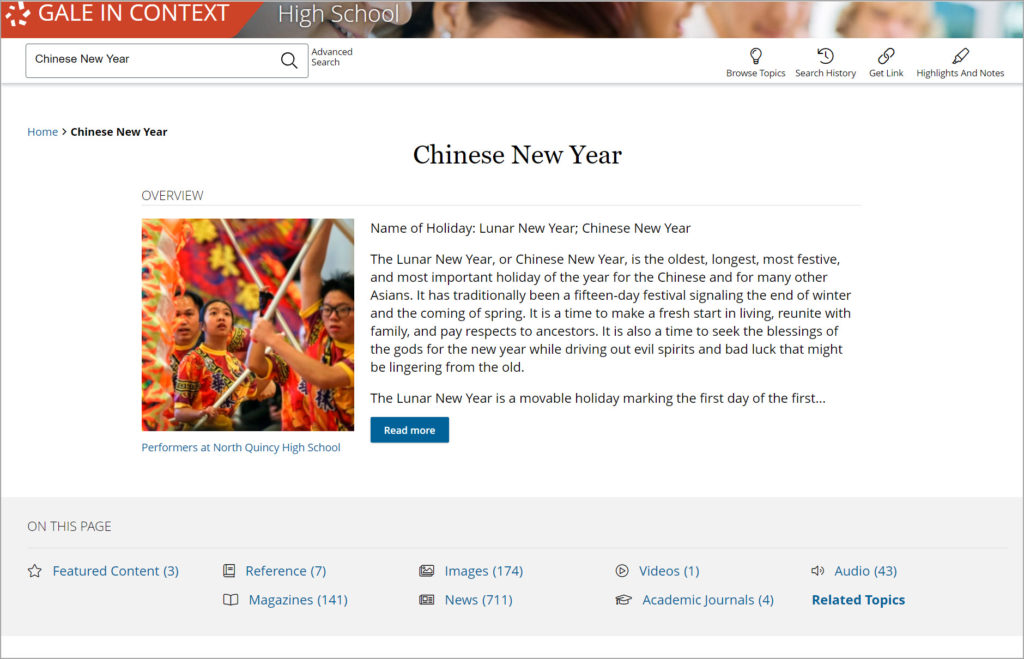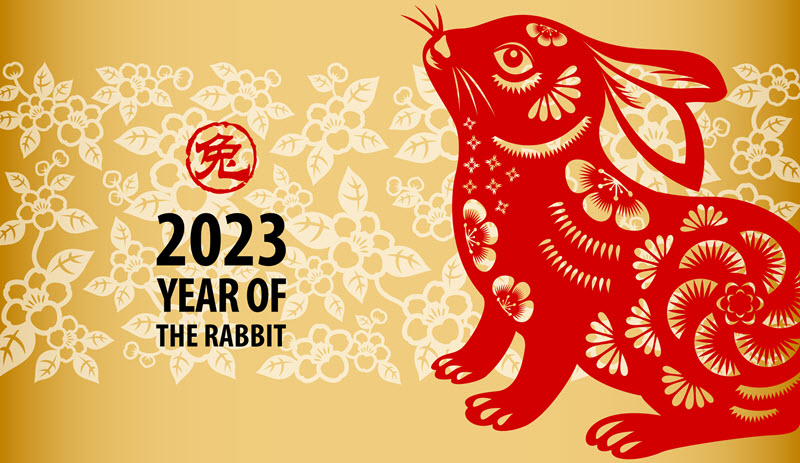| By Gale Staff |
Asian communities around the world celebrate Chinese New Year, also called Lunar New Year, but many people know very little about the holiday’s special traditions. People have observed Lunar New Year for thousands of years; it’s a celebration brimming with bright colors, costumes, performances, and treats. There are all kinds of ways to integrate Chinese New Year customs into your classroom—you can even order some mooncakes for students to share.
Families who celebrate Chinese New Year have their own unique beliefs and traditions, but there are some general themes that characterize the holiday. For example, communities typically hold a large public festival, and the weeks leading up to the celebration are full of shopping and setting up decorations, not unlike American Christmas. Chinese New Year is also a chance to invite good luck into your life for the coming year. Families will travel great distances to be together, wear red, pay off old debts, and adorn their homes with certain fruits or flowers, all customs that people believe bring good luck.
This coming year, Chinese New Year is observed on Sunday, January 22. Consider creating a fun, themed lesson plan or research project to engage your students in the week leading up to the holiday. With Gale In Context: High School, your young adult learners can access a diverse collection of Chinese New Year content, helping them develop critical thinking and digital literacy skills for a successful future.

Explore Accurate Results for Chinese New Year Research
Have your students begin their research with the featured Chinese New Year summary housed in Gale In Context: High School. To build their foundation on the topic, students will discover the history, fascinating legends, and rich customs that define the holiday. Information is broken into bite-size paragraphs and written in a vocabulary appropriate to high school readers.
Once they’ve completed their preliminary research, you can use discussion questions to spark their curiosity. Ask your students to consider why different cultures would celebrate the new year on different dates. While Americans follow a Gregorian calendar, which relies on the earth’s rotation around the sun, the Chinese calendar is based on lunar phases, which change slightly from year-to-year.
High School mimics the popular search tools your students are undoubtedly familiar with, but the results in Gale are designed to be engaging, age-appropriate, and accurate—popular search engines can hardly make such a promise. Educators should help guide students in seeking authoritative, unbiased content for their research. Luckily, you never have to question the results in Gale In Context: High School because your students won’t need to filter through paid ads or clickbait to find the information they need.
Discussion Idea: Once students have explored Chinese New Year customs in more depth, have them build a list together of ways in which this holiday’s traditions are similar to western New Year’s Eve (fireworks, family gatherings, special meals, etc.). Building connections and considering other global perspectives helps your student develop curiosity and empathy.
Design Engaging Lesson Plans
With Gale In Context: High School, teachers and librarians can find inspiration for fun, hands-on activities and culturally sensitive lesson plans. If your school or library has access to a kitchen, consider making some traditional Chinese New Year foods together. You can find the recipes and directions for Chinese New Year mooncakes, egg drop soup, and much more in High School’s Chinese New Year entry.
Activity Idea: 2023 is the Year of the Rabbit—have students research the animal in the Chinese Zodiac that corresponds to their own birth year. Ask students to share if they identify with the traits outlined for their zodiac animal.
Customize High School Research to Different Learning Styles
When your high school students begin their research, they’ll discover a variety of results: featured content, pictures, videos, podcasts, magazine articles, news pieces, scholarly journal entries, and more. Such extensive options help students customize their learning in a way that meets their specific academic needs. Plus, all Gale In Context resources features translation options, display tools, and text-to-speech software, helping those with visual or audio disabilities. Students can even download text-to-speech files for listening on their mobile devices at their own pace.
Gale In Context: High School results often include embedded hyperlinks that lead students toward additional information should a particular topic intrigue them further. These helpful, guiding features provide high school students with an opportunity to individualize their research interests, following a rabbit hole of curiosity. Perhaps they want to read the firsthand accounts of Chinese American children celebrating the Lunar New Year. Or, they may wish to listen to a podcast discussing the holiday’s menu items. With hundreds of thousands of vetted results at their fingertips, your young researchers can curate their own learning journey.
Interested in learning more or want to request a trial of Gale In Context: High School? Reach out to your rep.

